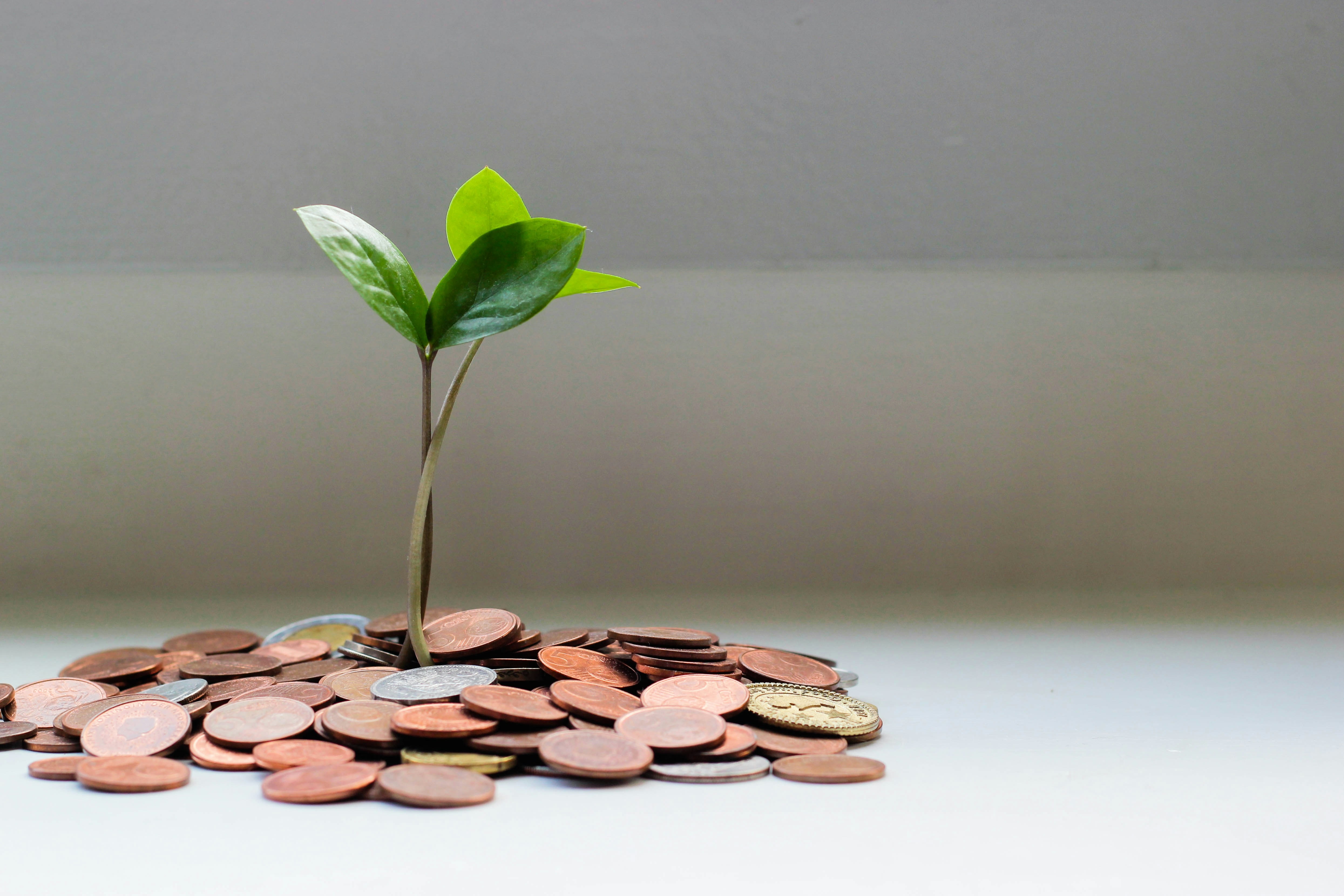How Green Financing is Fueling the Future of UK Renewable Energy
16 Jan, 202412 minsGreen financing is a catalyst for renewable energy and sustainability, having raised $540 bi...

Green financing is a catalyst for renewable energy and sustainability, having raised $540 billion between 2012 and 2021 to support the energy initiatives of people and businesses. It encompasses structured financial activities, including products and services, designed to result in positive environmental outcomes. From green loans, bonds, banks, credit cards, and more, these green investments aim to promote the advancement and accessibility of green and renewable energy projects.
Within this guide, we'll address what green financing is, why it's important and how the UK is supporting this aspect of the energy transition with its green finance strategy.
This guide delves into the following:
- What is green financing?
- What are the different types of green financing?
- Examples of green finance
- Why is green finance important?
- What is the UK Green Financing Framework?
- Exploring the UK Green Finance Strategy
What is green financing?
Green financing is a strategy aimed at enhancing the amount of financial backing from public, private and non-profit sectors to support the development of renewable energy projects and sustainable infrastructure. Overall, the concept of green finance involves identifying ways to generate financial gain alongside positive sustainable and environmental progression while also managing environmental, social and governance risks.
The definition of green financing also refers to loans or investments aimed at supporting environmentally friendly and renewable energy activities, such as the commercialisation of eco-friendly products and services. This type of financing involves various financial instruments focused on environmental goals, focusing on low-carbon, sustainable, renewable and inclusive objectives.
Transitioning to greener practices can be financially challenging for individuals or businesses. Green finance serves as a bridge, providing incentives to allow more affordability for those eager to embrace environmentally friendly lifestyle choices and renewable energy practices. This can range from improving the energy efficiency of homes and businesses to adopting electric vehicles.
Green finance has seen significant growth in recent years, evolving from a niche sector to a prominent player in the global economy. Between 2012 and 2021, global green financing grew more than 100 times over, reaching $540 billion. The rise of green financing stems from the increased recognition of environmental issues, particularly the global climate crisis.

Understanding the magnitude of the challenge of the transition to renewable energy, organisations like the United Nations emphasise the need for around $3 trillion to $5 trillion in green investments by 2030 to address climate objectives and prevent the worst effects of climate change.
The Role of Banks and the Future of Green Finance
The financial sector has acknowledged the economic shift towards renewable energy and sustainability goals by offering a range of green financial instruments. Banks and financial institutions are increasingly pivotal in making green finance accessible for people and businesses.
Banks and financial institutions are vital to the future of sustainable finance, contributing significantly to the scale and scope of green initiatives. As risks associated with environmentally detrimental practices products rise, the availability and accessibility of green finance become paramount.
Adopting green alternatives is expected to become the norm over time, with banks increasingly making funds available for green projects, including investments in renewable energy sources like wind and solar farms.
What are the different types of green financing?
Since we've covered the question of 'What is green financing?', it's important to delve into specific types of green finance, from green bonds and loans to green banks, green mortgages and more. All these forms of green finance play a pivotal role in advancing sustainability and renewable energy services:
- Green bonds: Representing a substantial portion of green funding, these bonds funnel investments into various green initiatives, including renewable energy, clean transportation, and conservation, contributing significantly to the sustainable future the world has ambitions of achieving.
- Green loans: Tailored for environmental initiatives, these loans allow people to support their individual projects and clean energy efforts, such as installing solar panels on their houses, driving electric automobiles, and other energy efficiency practices contributing to the transition to renewable energy.
- Green equity: This type of green finance involves investing in companies committed to environmental sustainability and renewable energy practices. Whether public or private, investors can support businesses producing eco-friendly products or working to reduce their environmental impact.
- Green insurance: Offering tailored policies to protect people and organisations against environmental risks, this type of green financing supports policies ranging from crop insurance for farmers to marine and renewable energy insurance. These policies provide financial protection while encouraging environmentally responsible practices.
- Green banks: Operating similarly to traditional banks, green banks utilise public funds to incentivise private investment in environmentally friendly and renewable energy projects.
- Green mortgages: These mortgages offer favourable terms to property buyers interested in investing in properties with high environmental sustainability ratings or those willing to enhance a property's environmental performance.
- Green credit cards: The innovation of green credit cards allows customers to plant a tree with every purchase, channelling expenditures towards green finance and allowing people to positively impact the environment.
Examples of how green financing is used in the UK
As we alluded to, there are several examples of green finance, all of which reflect a diverse range of initiatives aimed at promoting environmental sustainability and renewable energy efforts.
One prominent framework facilitating transparency and disclosure in the green financing space is the Taskforce on Climate-Related Financial Disclosures (TCFD), backed by the Financial Stability Board (FSB). This international framework encourages organisations to disclose publicly the climate-related opportunities and risks associated with their business.
Notably, the UK, a leader in the G20, has set a precedent by being the first G20 nation to mandate TCFD-aligned disclosures across its economy. This showcased a commitment to climate-related financial transparency and innovation.
Among the range of examples of how global green financing initiatives, several stand out. Here are the primary ways in which green finance supports global sustainability goals:
- Transitioning to renewable energy sources: Green finance funding facilitates the shift from fossil fuels to renewable energy sources like solar power, hydroelectricity, and wind, promoting cleaner and more sustainable energy production.
- Environmental audits: Green financing supports comprehensive environmental audits, allowing businesses to assess and address their environmental impact, paving the way for more sustainable practices.
- Pollution and carbon footprint reduction: Funding supports initiatives to reduce pollution levels, contributing to a healthier and more sustainable environment. Initiatives funded by green finance also focus on strategies to lower carbon footprints, encouraging businesses and individuals to adopt more environmentally friendly practices
- Climate-proofing for infrastructure: Green financing encourages investments in climate-proofing infrastructure and buildings to enhance resilience against the impacts of climate change and ensure long-term sustainability.
- Agricultural research and development: Investments in agricultural research contribute to sustainable farming practices, fostering innovation and resilience in the face of climate challenges.
- Planning of land usage: Financial support through green financing also supports sustainable land-use planning, helping to optimise land resources for ecological balance and resilience.
- Addressing deforestation and nature-based solutions: Green finance supports projects to combat deforestation, promoting sustainable land use and biodiversity conservation. Additionally, green investments in nature-based solutions contribute to protecting people and assets by harnessing the power of ecosystems to address environmental challenges.
Why is green finance important?
Green finance has emerged as a catalyst for transformative change in the renewable energy industry, offering many benefits beyond economic considerations. From shaping a greener future and funding technological advancements to giving businesses an advantage, increasing the social impact of sustainable practices, and stimulating the creation of jobs to attract a new wave of renewable energy talent, here are the key reasons why green finance is important.
- Shaping a greener future: Green finance presents an opportunity to shape a future spearheaded by innovation, new businesses, increased employment, and a robust, sustainable economy. This approach simultaneously addresses the urgent need to reduce carbon emissions, aligning economic growth with environmental responsibility.
- Technological advancements and infrastructure development: Governments in developing countries leverage green finance to construct infrastructure to promote long-term resource management, enhance competitiveness in the energy space, and attract private sector investment into local green markets.
This contributes to technological advancements and the development of environmentally friendly infrastructure, which supports the progression of the latest and future renewable energy projects.
- Gives businesses an advantage: As environmental regulations tighten in response to climate change challenges, embracing green finance provides a competitive advantage. Companies that actively participate in green financing enhance their value in the eyes of environmentally conscious investors, customers and talent in the global renewable energy market.
- Inclusivity and social impact: Socially, green financing broadens access to environmentally friendly projects and services, making household installations of energy alternatives such as solar panels more commercially available and affordable. This is especially important for building inclusive growth in vulnerable and marginalised communities and encourages them to transition to low-carbon and sustainable energy practices.
- Renewable energy job creation: Increased funding to adopt greener practices stimulates growth for businesses keen to become part of the energy transition. With this growth comes an increase in the creation of renewable energy jobs, as organisations require more talent to fulfil their environmentally friendly practices.
What is the UK Green Financing Framework?
The UK's Green Financing Programme is an initiative designed to mobilise funds from investors directed towards green expenditures and renewable energy projects to combat climate change, restore natural ecosystems, and boost job creation in the green energy sectors. This funding is primarily secured through the issuance of green gilts, managed by the Debt Management Office (DMO), and the sale of National Savings and Investments (NS&I) retail Green Savings Bonds.
At the heart of this programme is the UK Green Financing Framework, a set of principles unveiled in June 2021. This framework is a guide on how the proceeds from green gilts and NS&I's Green Savings Bonds are channelled into green expenditures. These expenditures are strategically designed to address pressing environmental challenges, including climate change, pollution, and biodiversity loss, while concurrently fostering employment in the green sectors.
As stated on the UK government's green financing page, the framework categorises green finance expenditures into six distinct areas:
Energy Efficiency
Clean Transportation
Living and Natural Resources
Pollution Prevention and Control
Climate Change Adaptation
Renewable Energy
Additionally, the framework obligates the government to provide annual allocation and biennial reports on environmental impacts and social co-benefits to ensure transparency and accountability. This commitment aims to keep retail and institutional investors and other stakeholders informed about the progress and contributions of the programme.
In September 2023, the government recently released the programme's Allocation and Impact Report for the financial year 2022-23. This comprehensive report provides detailed insights into how £8.6 billion of the financing raised during this period was put towards 51 projects within the six green expenditure categories listed above and specified in the framework.
The report also outlines the environmental impacts of the £16.4 billion in green expenditures, offering a holistic view of the programme's tangible outcomes. It also underscores the programme's environmental and social impacts, showcasing its role in supporting the UK's pathway to achieving its 2050 net-zero target.
As of September 2023, the UK Green Financing Programme has successfully raised over £31 billion from selling green gilts and more than £1 billion from NS&I's Green Savings Bonds since its launch in 2021. This highlights the programme's continued success and the growing significance of green finance in driving positive environmental and economic change.

Exploring the UK Green Finance Strategy
In its pursuit of global leadership in green finance, the UK government introduced a new Green Finance Strategy on March 30, 2023, an update from the previous strategy in 2019. This strategy outlines the government's commitment to becoming the world's first net zero-aligned financial centre and introduces key updates, including plans for a UK Green Taxonomy, mandatory transition plan disclosures, and the adoption of the International Sustainability Standards Board (ISSB) standards.
Below is an outline of the key elements of the UK Green Financing Strategy:
UK Green Taxonomy
The strategy provides an update on the UK Green Taxonomy, a framework for determining whether an investment can be classed as environmentally sustainable. Here, businesses will be expected to voluntarily report against the taxonomy in the initial two years of its launch, with the possibility of it becoming mandatory at a later date. The UK government has yet to announce an update on the taxonomy, despite its plans to consult on the subject in the autumn of 2023.
Transition Plans
The government has also committed to consulting on new requirements for the UK's largest companies to publish their energy transition plans. This would be on a 'comply or explain' basis following the completion of the UK Transition Plan Taskforce's work.
ISSB Standards
A framework will be established to assess the ISSB standards for UK businesses. The ISSB is a private independent body responsible for planning and approving the International Financial Reporting Standards and Sustainability Disclosure Standards (IFRS SDS). These standards aim to establish a global baseline for companies to report on their environmental, social, and governance (ESG) impacts. The implementation of this policy is forecasted for July 2024.
Sustainable Disclosure Requirements
Following the above point, the UK government reiterates its commitment to sustainable disclosure requirements, consolidating new and existing frameworks for corporations and financial services firms.
While the UK's renewable energy and low-carbon industries received significant investments, the government recognises the need for continuous private sector involvement, estimating an annual requirement of £50-60 billion in the green economy to achieve net zero. As the UK advances its green finance strategy, the evolving energy space will play a pivotal role in scaling up innovation and achieving ambitious decarbonisation targets in the coming years.
Final thoughts on the impact of green financing
Ultimately, Green financing is a key driver for renewable energy and sustainability, utilising various instruments like green bonds and loans, with financial institutions, especially banks, playing a crucial role in making green finance accessible.
As we’ve covered, the UK's Green Financing Programme, highlighted by its Green Financing Framework, serves as a successful model, raising over £31 billion for projects aligned with environmental goals. Additionally, the UK's Green Finance Strategy, introduced in 2023, underscores the government's commitment to global leadership in green finance and outlines key initiatives such as the UK Green Taxonomy and ISSB standards.
In essence, green financing addresses environmental challenges and contributes to economic growth, technological advancements, job creation, and inclusivity. Its continued evolution is pivotal in achieving a sustainable and environmentally responsible future.
As we’ve focused this piece on the UK renewable energy space, why not discover the latest insights from the US by exploring how the Inflation Reduction Act is shaping the US talent market?
Looking to grow in the renewable energy industry?
If you’re seeking to take advantage of green financing to support your future renewable energy projects, you need the talent to do so. As experts in the renewable energy recruitment space, with over two decades of experience, we can connect your business with the brightest minds in the renewable and green energy industries.
Contact us today if you’re looking for a partner to navigate the talent acquisition of your future green finance renewable energy projects.










